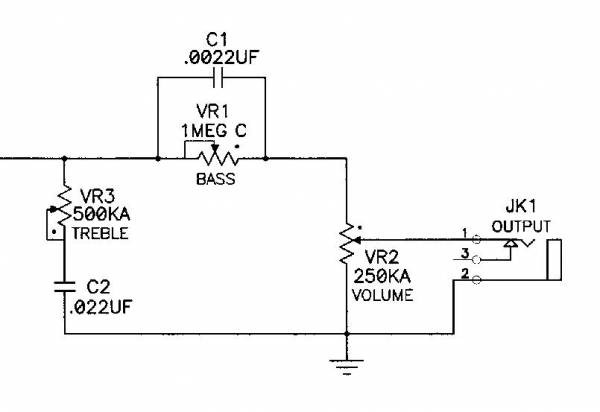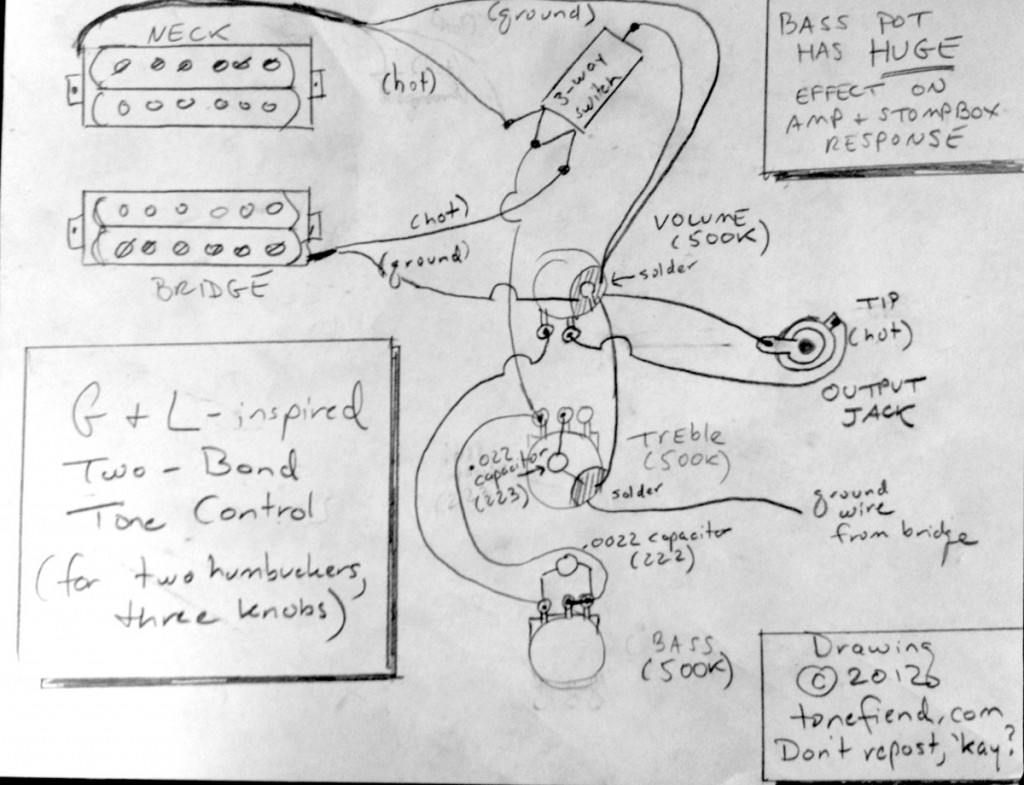Guitarists are always seeking ways to expand their tonal palette and gain more control over their instrument’s sound. While standard guitars typically come equipped with volume and tone controls, many players crave additional options to shape their tone for different musical styles, amplifiers, and effects pedals. One innovative and effective method to achieve this enhanced control is by implementing the Passive Treble and Bass (PTB) circuit. This modification offers a creative solution to sculpt your guitar’s frequencies, providing a broader range of sonic possibilities directly from your instrument.
Understanding the Limitations of Standard Guitar Controls
Traditional guitar wiring often includes a master volume and a tone control, typically a treble cut. These controls are fundamental and useful, but they have limitations. The standard tone knob primarily rolls off high frequencies, which can darken the tone but sometimes at the expense of clarity and articulation, especially when using distortion or fuzz pedals. Players often find themselves wanting more precise control, particularly in managing the low-end frequencies that can become muddy or overwhelming.
Introducing the PTB Circuit: A Creative Solution for Enhanced Tone Control
The PTB circuit, an innovation found in some G&L guitars, presents a creative approach to tone shaping by adding a bass cut control alongside the traditional treble cut. PTB stands for Passive Treble and Bass, accurately describing its function. This circuit retains the standard treble bleed tone knob but introduces a second potentiometer dedicated to cutting bass frequencies. The impact of the bass control is significant, especially when using overdrive, distortion, and fuzz effects. By reducing the low-frequency content entering these pedals and amplifiers, the PTB circuit acts as a “clarity knob.” It doesn’t just remove bass; it tightens the low end, making the pickups sound cleaner, more open, and dynamically responsive. The result is a less compressed and more articulate tone, offering a wider spectrum of sonic textures.
The Benefits of a PTB Circuit
Integrating a PTB circuit into your guitar offers several key advantages:
- Improved Clarity: By filtering out excessive bass frequencies, the PTB circuit prevents muddiness, especially beneficial for humbucker-equipped guitars known for their powerful low end. This clarity enhancement is crucial for genres where articulation and note definition are paramount.
- Enhanced Dynamics: Cutting bass frequencies can drastically improve the dynamic response of your pickups. The reduced low-end energy allows the pickups to react more sensitively to your playing nuances, resulting in a more expressive and lively tone.
- Versatility with Pedals and Amps: The PTB circuit optimizes your guitar’s signal for a wider range of effects and amplifiers. Many stompbox builders understand the importance of input filtering, and the PTB circuit allows you to apply similar principles directly from your guitar. This pre-effect tone shaping can dramatically improve how your guitar interacts with downstream gear.
- Stompbox Input Cap Analogy: Think of the input capacitor in fuzz or overdrive pedals, which is crucial for shaping the low-frequency response. Too much bass entering these circuits can lead to flabby or muddy tones, while too little can sound thin and shrill. The PTB circuit gives you a similar level of control right on your guitar.
Implementing the PTB Circuit: DIY Guide
The PTB circuit is remarkably adaptable and can be implemented in guitars with three or four control knobs. For a typical three-knob guitar (volume, tone, tone), it can replace one of the standard tone controls, providing a global volume, a global treble cut, and a global bass cut. In a four-knob Les Paul-style setup, you could maintain individual volume controls for each pickup and implement global bass and treble controls, offering a versatile configuration.
The beauty of the PTB circuit lies in its simplicity. It can often be implemented using standard 500K potentiometers commonly found in humbucker guitars. This means you might be able to perform this modification with minimal additional parts, primarily requiring some wire and solder.
Here is the schematic diagram illustrating the PTB circuit:
 Schematic diagram of the Passive Treble and Bass (PTB) guitar tone circuit, illustrating component connections for wiring.
Schematic diagram of the Passive Treble and Bass (PTB) guitar tone circuit, illustrating component connections for wiring.
And here’s a wiring diagram to guide you through the installation process:
 Wiring diagram for PTB guitar tone control circuit, showing pot and capacitor connections for easy DIY installation.
Wiring diagram for PTB guitar tone control circuit, showing pot and capacitor connections for easy DIY installation.
When wiring the circuit, pay close attention to capacitor values. The bass control capacitor is typically a .0022uF capacitor, while the treble cap is usually .022uF. It’s crucial to use the correct value for the bass cut capacitor (.0022uF, not .022uF) to achieve the desired effect. If you prefer a more pronounced treble cut when the tone knob is fully counterclockwise, you can experiment with substituting a .033uF or .047uF capacitor for the .022uF treble cap.
PTB Circuit with Different Pickups
While the PTB circuit is effective with all types of pickups, it is particularly beneficial for guitars equipped with humbuckers. Humbuckers, known for their rich and powerful sound, can sometimes produce excessive low frequencies that become overwhelming, especially with high-gain amplification. The PTB circuit provides an elegant solution to tame this low-end energy and enhance clarity. However, the PTB circuit also works wonderfully with single-coil pickups, just as Leo Fender originally intended. Even brighter single-coils, like those found in classic Fenders or G&L’s MFD pickups, can benefit from the added tonal control and clarity offered by the PTB circuit.
Conclusion
The Passive Treble and Bass (PTB) circuit is a genuinely creative and practical way to add enhanced tone controls to your guitar. It moves beyond the limitations of standard tone circuits by providing independent control over both treble and bass frequencies. This modification empowers guitarists to sculpt their tone with greater precision, achieving improved clarity, enhanced dynamics, and optimal performance with a wide range of amplifiers and effects. Whether you play humbucker-equipped guitars and struggle with muddiness or seek to expand the tonal versatility of your single-coil instrument, the PTB circuit is a modification worth considering to unlock new sonic possibilities from your guitar. Once installed, you might find, like many others, that this becomes a permanent and indispensable modification, staying in your guitar for years to come.
